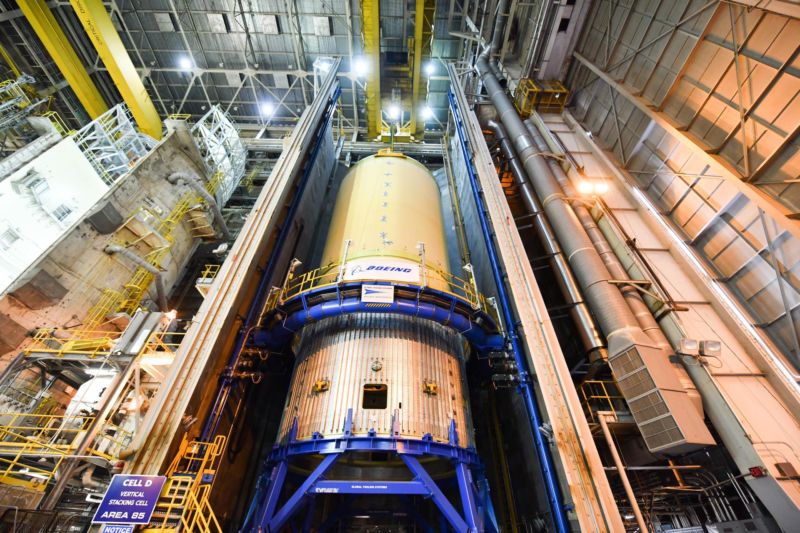NASA will award Boeing a cost-plus contract for up to 10 SLS rockets

Enlarge / The Space Launch System (SLS) rocket's liquid oxygen tank structural test article was manufactured and stacked in June 2019 at NASA's Michoud Assembly Facility in New Orleans. (credit: NASA)
The principle behind a cost-plus contract is simple. Occasionally, the US government needs something exceptionally difficult, complex, and unprecedented to be built. In those cases, with technical challenges all but certain to arise, the government pays a contractor the entire value of the development costs, plus a fee-often 10 percent.
This is a useful tool to get the best contractors in the country to focus their efforts on large programs the government deems valuable. But it's not a good way to encourage a company to move quickly on a program, especially as businesses seek to maximize profits. This is because the longer a contract goes, the more money it costs, and the greater fees it generates.
The alternative to this is a fixed-price contract, in which the government pays a vendor a fixed fee for a product. If the company delivers a product for less than that, it makes a profit. If the product ends up costing more, the company eats the difference. Most of the time, a company does not get paid the bulk of the funding until they deliver a product.
Read 9 remaining paragraphs | Comments